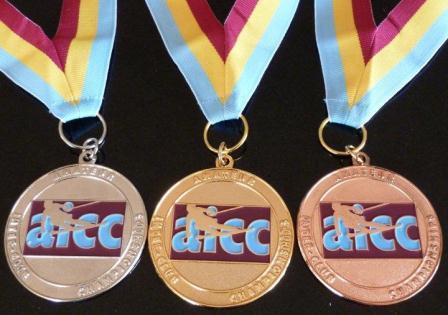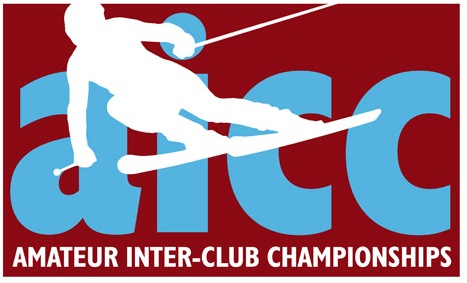Championship Rules & Results Calculation
Championship Rules & Calculation of Results
Championship Rules
Teams from each club will ski against each other in 2 races: a Giant Slalom and a Super-G. In addition, the host club is encouraged to run a wide parallel slalom. The parallel slalom, will be run for fun and will not carry points for the Championship (teams for this event can be drawn from each club and they should be mixed).
The Giant Slalom and the Super-G will constitute the Championship and will have equal points and will be run in accordance with the following rules:
- Entry into the Championship will be restricted to amateur ski racers. For the purposes of the Championship 'amateur ski racer' means anyone who has not, at any time during the 5 years prior to the Championship, had a world ranking higher (better) than 400 in any official FIS Alpine discipline.
- There will be 4 age categories (age as by year of birth) for men and women, 18-44 , 45-59, 60-69 , 70 & over. (For 2025, 18-44 (2007-1981), 45-59 (1980-1966), 60-69 (1965 -1956), 70 & over(1955 and before)).
- Each team in the 18-44, 45-59 and 60-69 categories will consist of 3 or 4 male (men's category) or 3 or 4 female skiers (ladies category) of the same age category. Each team in the 70 & over category will consist of 3 or 4 skiers of which no more than 2 can be men.
- All racers in a team should belong to the same club or, in the case of the over 70 category, belong to one of 2 clubs. A team that does not satisfy these restrictions is not eligible for a prize or a podium position but will appear in the results.
- It will be possible for a racer to race in a younger age category or for a lady to race in a men's category, but there is no mixed team category under 70.
- There shall be no substitutions or additions to team members after the first team member has started the first race.
- Clubs may enter up to 9 teams and not more than 4 teams in any category. These numbers may be adjusted by the host club depending on the capacity of the resort.
- The time of each team shall be the sum of the times of the 3 fastest skiers in each race, i.e. one racer's time in each race can be dropped and it need not be the same skier for both races. For details of the calculation, see below.
- Race courses to be set by a qualified course setter, but the race piste does not have to be FIS homologated.
- The start order will be older categories before younger categories. Within each age category, ladies’ categories before men’s categories. Within each age/gender category, members of each team will be interleaved so the first member of team 1 will be followed by the first member of team 2 etc. for all the teams in the category, then the second team member for each team will start and so on.
- For each of the Super G and GS races, a penalty of 10 seconds will apply for each gate missed, up to a maximum of 3 gates missed. If a racer misses 4 or more gates, he or she will be disqualified from that race.
- It is compulsory to have approptiate equipment and to wear a suitable ski racing helmet.
- The Captain of each team is responsible for his/her team.
- Names and numbers of any racers who missed gates, together with the gate number/colour will be displayed on the results board 10 minutes after the last racer has finished. Race times will be published as soon as is practical.
- Protests must be lodged by the Team Captain with the Chief of Race within 20 minutes of completion of each event. The Chief of Race will convene an appropriate Jury to hear and determine the protest. The Jury's decision is final.
- Prizes will be awarded for the fastest teams in each category (age and gender). If there are sufficient entries, second and third prizes will be also be awarded in each category. "Sufficient entries" is defined as being at least one more than the number of prizes. Additional prizes may be awarded at the discretion of the host club.
- Each participant is solely responsible for ensuring he has adequate insurance cover. This insurance should cover emergency medical treatment, mountain rescue and third party liability (also known as Personal Liability) and should not have exclusions relating to ski racing. Each participant must sign the Athlete's Declaration prior to starting any Championship race or the parallel slalom.
- The international committee shall not be held responsible for injury to person or damages to equipment, arising from the competition or during practice. The international committee does not accept any liability whatsoever and howsoever caused for any bodily injury; to any person including but not limited to competitors, support teams and third parties, and damage to property.

Calculation of Results
(Assuming 2 GS runs and one Super-G run.)
For GS: The times of the 3 fastest skiers in first run and the times of the 3 fastest skiers in the second run are added together and then divided by 2 to get the average. For each category, 100 points are awarded to the winning team and each team thereafter is awarded 100 multiplied by the percentage difference. For example, if team 1 is the winner with a time of 60 seconds, they get 100 points and If team 2 have a time of 66 seconds (ie 10% more) they get a score of 110.
For Super-G: The times for the 3 fastest 3 skiers for each team are added together to give the team time. Again, 100 points are awarded to the winner everyone else is scored the same way as in the GS.
The points for the 2 events are added together to get a total team score (it would be possible just to add the times of the 2 events together, but be rebasing to 100 each time it makes sure that both events are of equal importance).
